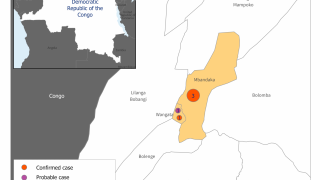Epstein-Barr Virus Vaccine Strategy Progresses

Scientists from the National Institute of Health (NIH) say they have determined how several antibodies induced by the Epstein-Barr virus (EBV) block infection of cells grown in the laboratory.
They then used this information to develop novel vaccine candidates that, in animals, elicited potent anti-EBV antibody responses that blocked infection of cell types involved in EBV-associated cancers.
This pre-human research is important since there is no licensed vaccine currently available for the Epstein-Barr virus.
The Epstein-Barr virus, also known as herpesvirus 4, is one of the most common human viruses in the world. It spreads primarily through saliva and can cause infectious mononucleosis.
Additionally, EBV is associated with certain cancers (nasopharyngeal and gastric) of epithelial cells, which form the lining of the body’s surfaces, as well as Burkitt and Hodgkin lymphomas, which are cancers of the immune system’s B cells.
Worldwide, about 200,000 cases of EBV-associated cancers occur annually, resulting in 140,000 deaths.
This new research helps define the contributions of virus-neutralizing antibodies other than those directed at gp350 on B cells.
Among other findings of this study, the team determined that antibodies to viral proteins called the gH/gL complex play a major role in inhibiting EBV fusion with epithelial cells.
These scientists developed 2 vaccine candidates, one designed to elicit antibodies to gH/gL on epithelial cells and another that included gH/gL and another viral protein, gp42.
The team tested the vaccines in a series of experiments in mice and monkeys. In both animal models, each of the experimental vaccines induced antibodies that potently inhibited epithelial cell fusion.
The vaccine containing gp42 induced stronger B cell fusion inhibitory antibodies than the one containing gH/gL alone.
Unlike the gp350 candidate EBV vaccine, which protects only B cells from infection, the candidate vaccines described in the new paper elicited antibodies that could prevent EBV from fusing with both epithelial cells and B cells and thus may provide protection independent of cell type, the authors note.
Jeffrey I. Cohen, M.D., and Wei Bu, Ph.D., both of the NIH’s National Institute of Allergy and Infectious Diseases, led the investigation. Prior efforts to develop an EBV vaccine focused on a viral surface protein, gp350, that the virus uses to enter B cells.
However, EBV infects not only B cells but also epithelial cells that line the mouth and upper throat.
No conflicts of interest were disclosed.
Our Trust Standards: Medical Advisory Committee
- NIH researchers make progress toward Epstein-Barr virus vaccine
- Immunization with Components of the Viral Fusion Apparatus Elicits Antibodies That Neutralize Epstein-Barr Virus in B Cells
- About Epstein-Barr Virus
- Recent advances in understanding Epstein-Barr virus
- Epstein‐Barr virus strain variation and cancer



